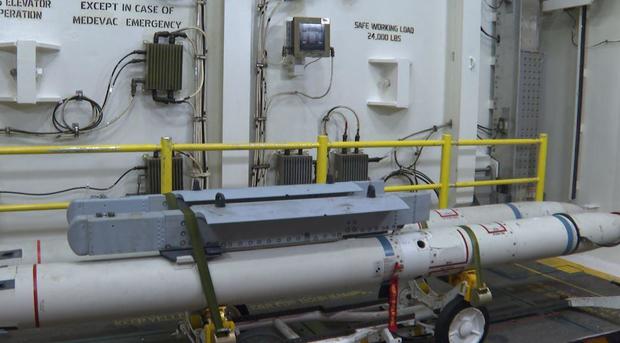After years of delays, the most advanced aircraft carrier ever built is underway
The USS Gerald R. Ford, the Navy’s most advanced aircraft carrier is now on its first deployment, five years after it was commissioned into service and 15 years after it was named.
The brief deployment to the Atlantic is expected to further test the systems that delayed its debut. The carrier and its strike group will exercise with eight other nations.
“We already know all of this stuff works, and now we want to use it,” Captain Paul Lanzilotta, the Ford’s commanding officer, told reporters visiting the ship last week.
The Ford faced several delays related to some of the 23 new technologies it brings on board.
In particular, engineering and software issues stalled the certification of both the weapons elevators used to carry bombs and missiles to load onto jets and the catapults that launch aircraft off the carrier.
The Ford is the first carrier to use an electromagnetic catapult system instead of the traditional steam-powered one. The new system is expected to increase the number of flights by 33%, lengthen the lifespan of aircraft and handle heavier aircraft, like advanced drones.
“Certainly on the surface of the sea, this will be the most powerful warship that our Navy has ever put to sea, probably any Navy ever,” Capt. Lanzilotta said.
The $13 billion price tag also makes the Ford the most expensive warship in Navy history.
Originally, the Ford was projected to cost $10.5 billion, but problems with the advanced technologies drove up the cost and delayed its inaugural deployment by four years.
Despite all of its new technologies, the Ford is still not quite current. The carrier is not yet outfitted for the most advanced fighter jets – F-35s.
“It’s not that the flight deck can’t handle them, we can do that,” said Commander Homer Hensy, the chief engineer on board the Ford. “But if you want to bring the full lethality of an F-35 and its airwing and what it brings to a carrier battle group, you have to install other certain operating stations and systems.”
Hensy said the Navy had to decide around 2006 and 2007 to develop the Ford with the airwing that already existed, which didn’t include the F-35. Since then, the Navy has modernized other carriers so they’re fully F-35 capable, and the Ford will probably wait for those upgrades.
Eleanor Watson
Eleanor Watson
The carrier has more room to incorporate future technologies, like laser weapons and drones.
“There is plenty, plenty of room, trust me when I say this, without disclosing anything classified on here – this ship has tons of spare capacity,” Hensy said.
While walking around the ship, several sailors pointed out how cool the temperature was on board compared to older aircraft carriers.
The change from steam-powered catapults to electromagnetic ones means the crew who manage the systems that launch and recover aircraft are not working in high-temperature conditions since the new system uses computers. The ship overall is cooler, according to Hensy, because of the “much larger” air conditioning plants that have the cooling capacity to handle future systems.
During the visit with reporters last week, the crew also showed how changes to the flight deck are intended to make operations more efficient.
The man in charge of flight operations on the Ford, Commander John Peterson, said one visible difference is in-deck fueling stations.
“No longer are we carrying hoses across the deck,” Peterson said. “While we’re moving aircraft around the flight deck, we’re able to fuel the aircraft at the same time without having to worry about moving a hose out of the way so that we can get the aircraft to taxi through.”
Eleanor Watson
For this deployment, about 60 Navy aircraft — an assortment of F-18 super hornet jets, E-18G Growlers, E-2D Hawkeyes and MH-60 helicopters — will be on board.
Rear Adm. Gregory Huffman, the commander of the Gerald R. Ford Carrier Strike Group, said this deployment is a chance “to get a good understanding of how the Ford, with its new capabilities, will be able to interact with different ships and perhaps change how we do tactics from the big picture perspective.”






